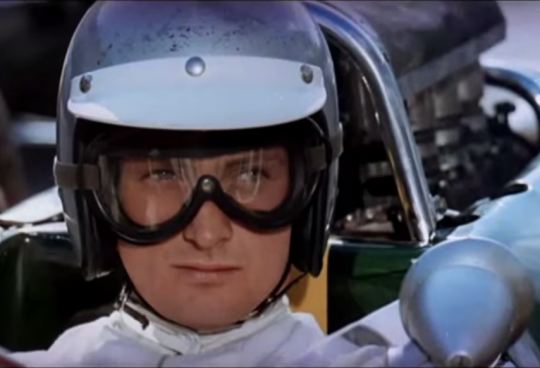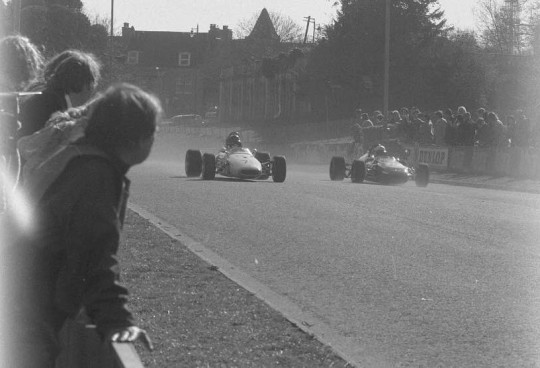Writing this blog on a weekly basis it’s impossible to predict when or how inspiration will strike – if indeed it does – for while there’s much to be said for creative freedom, it can be tough on the indecisive. Of course something always comes up, be it an article in an old magazine, a car glimpsed in one of the many old films I watch, on the road, or in a book unearthed from a pile in a secondhand shop, for really I have no excuse – there’s no shortage of cars to write about. This week my inspiration is strange indeed: it’s the Polaroid, or rather Kodak, instant photo you see above, which I found whilst rummaging through a box of ephemera at a boot sale in Brighton last year. Now before you cry “Hoarder!” I should explain that I purchased a book at the same time, and sensing the photo’s hitherto untapped potential as a bookmark, grabbed it, and I’m glad I did, as some twenty books later it’s still serving its newfound purpose admirably, currently nestling amongst the pages of Alastair MacLean’s superb Ice Station Zebra.
What drew me to the Polaroid – sorry, Kodak, who had to pay damages for patent infringement – initially was obviously automotive, for it’s a unique snapshot of a road probably long since changed, and cars long since rusted. But it’s fun to slip on the deerstalker and play detective, and with a bit of car knowledge, plus the invaluable help of two colleagues I reckon I’ve got it pinned. Firstly the cars, three of the six visible are Fiats, with black number plates, so this is Italy; a bit of local knowledge highlights the pine trees, native to Rome, and a bit of memory jogging narrows it down to the ruins of the Circo Massimo (Circus Maximus). So we’re on a tour bus in central Rome, with the sun behind us, it’s afternoon – late – and thanks to the dullest of the cars, the Mk I Fiesta, and the fading Kodak film, I believe it’s 1977 or ’78 – the little Ford was only released in ’76 and so surely not common enough to have been captured in a random snapshot until the following year at the earliest.
There’s also a Mini, probably an Innocenti, a Citroën Ami estate, two Fiat 127s and a lorry I can’t place – it looks like a Fiat, but the headlights are wrong, and after a lot of searching I’m still no closer to finding out what it is (please write in if you know). The car that really catches my eye though is the silver Fiat 128 Sport, because when was the last time you saw one of those?! Maybe yesterday, if you live in Southern Italy, but if you happen to live in Southern London the answer is probably never. According to the invaluable howmanyleft.co.uk that should come as no surprise, because there are only nine still on the roads in the UK, in fact there are only 37 Fiat 128s of any description around, and considering how many they sold, that’s quite a feat.
The 128, introduced in 1969, was a real ground-breaker for Fiat, being as it was their first transverse-engined, front-wheel drive car, it became European Car of the Year in 1970 and set the template for practically every such car manufactured since. Designer Dante Giacosa might have taken his lead from Alec Issigonis’ pioneering work on the Mini, but the result was much simplified, improved in terms of practicality, serviceability and drivability. Rack-and-pinion steering, disc brakes at the front and independent rear suspension delivered sharp handling, and road tests consistently praised the 128 as a drivers’ car, unhindered by the modest output of Aurelio Lampredi’s soon-to-be iconic 1116 cc SOHC engine. A boost to 1290 cc came in 1971 along with the Rally and Sport Coupe editions.
Such was the popularity of the car, Fiat continued to churn out 128s until 1985, the last examples, produced abroad under license, rolling off the lines in 2001, a true testament to the longevity of Giacosa’s design. Unfortunately paper-thin steel and a typically relaxed attitude towards quality control meant that the cars disintegrated at an astonishing rate, hence the paltry 37 examples left in the UK. I sincerely doubt that any of the cars captured that day on Via del Circo Massimo still exist – they simply weren’t built to last, but thanks to our unnamed amateur photographer they’ve attained some level of immortality, and happily they’ve also made me feel a little like David Hemmings in Blow-Up for the afternoon.
First published on Discoveryuk.com


